Where is Cuba?
About Cuba
The Land
The People
Life and Death
Health, Energy and the Environment
Education and Work
Travel, Communication and the Media






Back to the Flags of North America page




Cuba is an island country in the south of North America.
Cuba has a border on the west side with the Caribbean Sea and on the east side with the Atlantic Ocean.
The land is mostly flat with hills and mountains in the south east.
The geographical coordinates for the centre of Cuba, also known as lines of latitude and longtitude, are:-
Latitude - 21 30N
Longitude - 80 00W
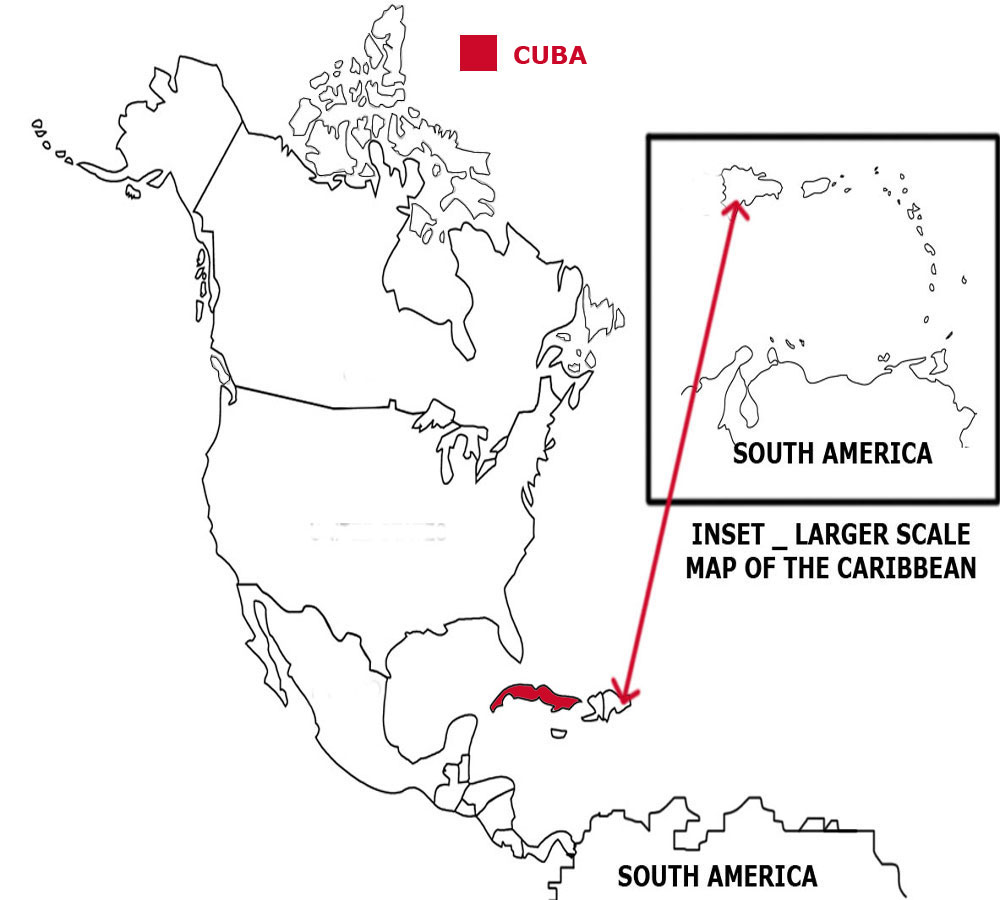

Check the weather in Havana now.
This is the time in Havana now
 The Cuban flag is 5 equal horizontal
stripes of blue, white, blue, white and blue. There is a red equilateral triangle based on the flag pole side with a white star in the centre.
The Cuban flag is 5 equal horizontal
stripes of blue, white, blue, white and blue. There is a red equilateral triangle based on the flag pole side with a white star in the centre.
Cuba is a presidential republic with a president as head of state and government.
In elections everyone over the age of 16 can vote.
The currency in Cuba is the Cuban peso.
Spanish is the official language.
Hear the National Anthem
These are the anthem words
We have already written our own history of England but are asking schools in Cuba to provide us with a detailed history of
their own country. Check how here.
![]()
![]() Back to the top
Back to the top

The total land area of Cuba is 109,820 sq kms which is the 6th largest in North America.
Cuba has lakes, rivers and canals which total 1,040 sq kms.
Cuba has no boundaries with other countries.
Cuba has a coastline of 23,735 kms which is the 4th longest in North America.
The highest point in Cuba is Pico Turquino at 1,974 metres.
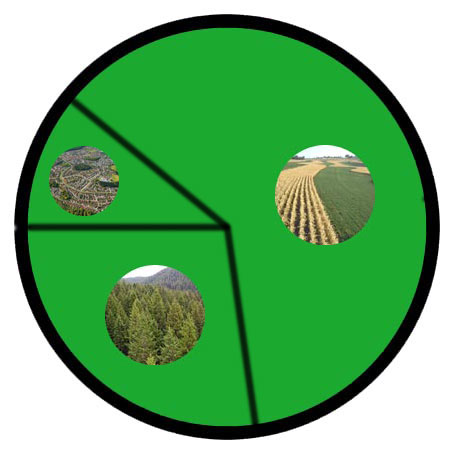

The total population of Cuba is 11.18 million people, making it the 5th largest country in North America by population.
Of this number 5.61 million are females and 5.57 million are males.
A person from Cuba is called a Cuban.
To be a citizen of Cuba you must bw born in Cuba or one of your parents must be a citizen of Cuba. We have no figure for how long you have to live
in Cuba before you can begin to apply for citizenship.
The largest five cities in Cuba, by population are:-
- Havana 2,163,864 people
- Santiago de Cuba 555,865
- Camaguey 347,562
- Holguin 319,102
- Guantanamo 272,801
 Each little Owlbut is 1 person and
the big yellow rectangle is 1 sq km. After a while you can compare countries and see which ones are the most crowded. Remember it is only an average as
more people live closer together in towns and cities than in villages out in the country.
Each little Owlbut is 1 person and
the big yellow rectangle is 1 sq km. After a while you can compare countries and see which ones are the most crowded. Remember it is only an average as
more people live closer together in towns and cities than in villages out in the country.
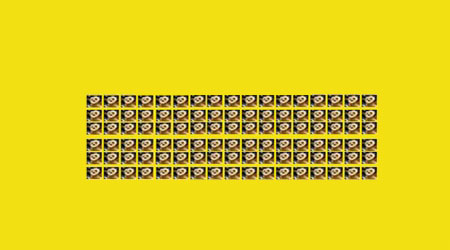
77.1% of the people live in cities or towns.

The birth rate in Cuba is 10.8 births per 1,000 of population
The death rate in Cuba is 8.6 deaths per 1,000 people.
Check this against the birth rate. If the death rate is higher than the birth rate then
the population will decrease unless immigrants arrive in the country.
There are 4.0 deaths of girls under 1 year per 1,000 of births and 5.0 deaths of boys.
The median age for females is 42.2 and for males is 40.0. The median age is that age which divides the population exactly in half so there are the same number
of people above the median age as below it.
We have no figures for the average age of a woman when she has her first child.
The elderly dependency ratio is 19.9. This is the number of elderly people (ages 65+) per 100 people of working age (ages 15-64).
The potential support ratio is 5.0. This is the number of working-age people (ages 15-64) per one elderly person (ages 65+). As a population ages, the potential support ratio tends to fall, meaning there are fewer potential workers to support the elderly.
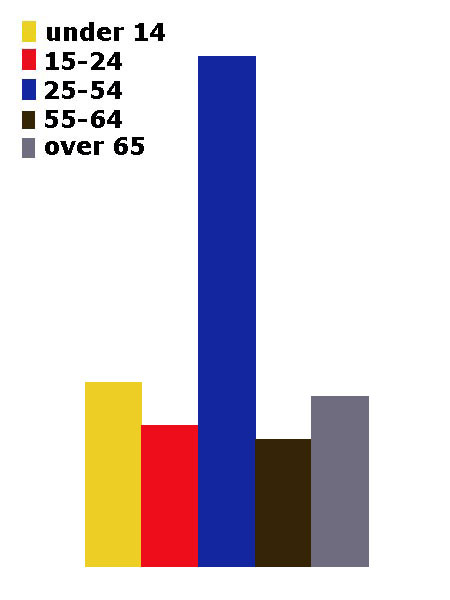


Cuba spends 11.1% of its total income on health care.
There are 6.72 doctors per 1,000 people.
There are 5.3 hospital beds per 1,000 people.
24.8% of the population are estimated as obese.
96.4% of the urban population and 89.8% of the rural population have drinking water that is either piped into their home or they have access to a public tap, a protected borehole, well, spring or
protected rainwater collection facility.
94.4% of the urban population and 89.1% of the rural population have access to a flushing toilet that is connected to a sewer. a pit latrine (that is a
permanent hole in the ground that is looked after) or a composting toilet.
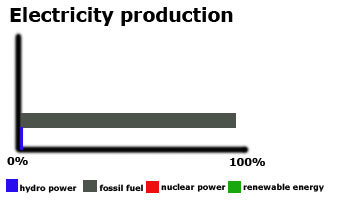
Cuba releases 26.0 million metric tons of carbon dioxide by burning fossil fuels in the process of producing and consuming energy. This puts it as the 5th highest in North America.

Cuba spends 12.8% of its total income on education.
Children usually start school at age 6 in Cuba. Primary education is for six years until age 12 and secondary education must continue till 15 but can go on to 18/19. This may be followed
by further education at a university or college.
Generally the school year starts at the beginning of September and finishes at the beginning of July.
99.8% of females and 99.9% of males are able to read and write by the age of 15.
6.1% of all people aged between 16 and 24 are not in work. Among females 5.6% are unemployed while with males 6.4% can't find work.
The total number of people available for work in Cuba is 5.12 million.
 They work in the following sectors.
They work in the following sectors.
- Agriculture includes farming, fishing and forestry work
- Industry includes mining, manufacturing, construction and energy workers
- Services is everything else

There are 64 paved airports in Cuba, which is the 4th highest number in North America.
![]()
There are 8,367 kilometres of railways in Cuba, the 4th longest in North America.
![]()
There are 29,820 kilometres of roads in Cuba, which means Cuba is in 4th place for the most kilometres of roads in North America.
![]()
There are 2 major national newspapers in Cuba.
There are 3.34 million mobile phone users.
12% of the people have a fixed landline.

3.43 million people have access to the internet at home via any device (computer or mobile).


